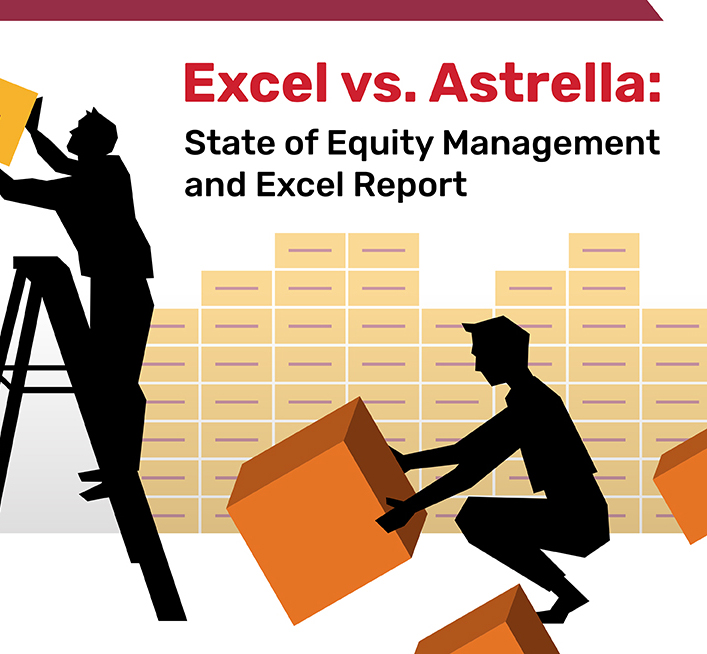Many companies increasingly turn to 409A valuations to value their stock accurately and ensure compliance with the Internal Revenue Code. This raises questions about the timing of these valuations and the potential benefits and drawbacks of having multiple valuations in a single year. However, the reality is that you will never need more than one per year.
In this article, we’ll explore why it companies may think they need more than one 409A valuation in a given year and why it simply isn’t the case.
What is a 409A valuation?
A 409A valuation is essential for companies that want to remain compliant with IRS regulations when issuing stock options and ensure that potential investors have confidence in their investments. It provides important insights into a company’s financial health and can be conducted multiple times a year if necessary. However, working with experienced third-party providers is essential to ensure accurate results while avoiding unnecessary costs or regulatory scrutiny.
The Basics of 409A Valuations
A 409A valuation is essential for companies looking to issue stock options and ensure compliance with the Internal Revenue Code (IRC). The purpose of a 409A valuation is to determine the fair market value of a company’s common stock and, therefore, the price at which the company can issue its stock options without triggering any tax implications. Generally, publicly traded companies must receive a 409A valuation once every 12 months, while private companies may also need one for certain transactions or investments.
The most common way to get a 409A valuation is through an independent third-party provider. These providers are typically experienced in finance and accounting, as well as IRS regulations, and use several methods – such as discounted cash flow analysis – to calculate the fair market value of a company’s shares. They can also guide people on how to comply with IRC regulations.
They must be reliable and trustworthy when opting for an independent third-party provider. After all, their assessment will determine the value of your company’s stock options. It is also good practice to research different providers before deciding; read reviews from previous clients and ask other organizations in your industry about their experiences with various providers.
You won’t need more than one valuation per year
The truth is that there aren’t many instances where a company will need more than one 409A valuation per year. We would recommend against it.
Theoretically, there is a question of valuation around particular events, including:
- Material Events: If a company experiences a material event that could affect its valuation (like receiving a new round of funding, a significant change in revenue or profitability, or a major change in business model), a new 409A valuation could be in order
- Best Practices: While the IRS guidelines suggest 12 months for 409A valuations, funding for startups could alter a company’s valuation.
- Company Growth and Changes: Fast-growing companies or those undergoing frequent changes might also see their valuation change over time.
However, the situation where these fundamentally shift when you get a valuation is almost non-existent. To trigger the need for this kind of valuation, the event (whether it is a massive buyout or funding round) would have to be entirely off the charts in terms of its scale.
And, without those triggers, 409A valuations are, in most cases, costly and redundant.
When in doubt, consult with your financial and legal advisors for why.
When might a company need multiple 409A valuations?
The truth is that 99% of companies won’t need multiple valuations in a year.
One of the most common reasons for conducting multiple 409A valuations in a year is when there has been a significant change in the value of common stock. This could be due to rapid growth or expansion, an acquisition or merger, changes in financials that require an updated valuation, or other factors that significantly impact the worth of a company’s common stock.
Another instance where multiple 409As may become necessary is when multiple classes of stock are in play. Different classes of stock have different values, which can fluctuate independently from one another, thus requiring additional 409As to ensure accuracy when determining each class’s worth.
Finally, companies may also need to conduct multiple 409A valuations if they issue employee stock option grants during the year. As these grants are often based on current market conditions and estimated future performance, it is important to have an up-to-date valuation before granting these options so that employees receive fair compensation without overpaying them due to outdated information. This is only if there has been a significant change in the value of common stock.
What are the considerations for choosing an appropriate time for a 409A valuation?
Selecting the right time to conduct a 409A valuation is paramount for companies. The timing should be carefully considered in light of the company’s financial calendar, consistency across different valuations, and any changes in capital structure since the previous valuation. It is also important to remember that working with an experienced third party can help guarantee accuracy and reduce potential liabilities from regulators or investors. Once all of these criteria have been assessed, companies can make an informed decision as to whether multiple 409As are necessary or not.
Conclusion
In summary, a 409A valuation can be an invaluable company asset. Not only does it provide accurate insight into the actual value of their equity, but it also helps them make informed decisions about their finances and investments.
That being said, there isn’t much reason for more than one 409A per year, regardless of what other financial service providers might suggest.

Tom Kirby
Tom Kirby serves as the Head of Global Sales at Astrella. With more than 20 years of experience in sales and business development, he is dedicated to fostering strong client relationships and assisting both private and public companies in understanding and effectively communicating their value.
- Tom Kirby#molongui-disabled-link
- Tom Kirby#molongui-disabled-link
- Tom Kirby#molongui-disabled-link
- Tom Kirby#molongui-disabled-link
































































































































